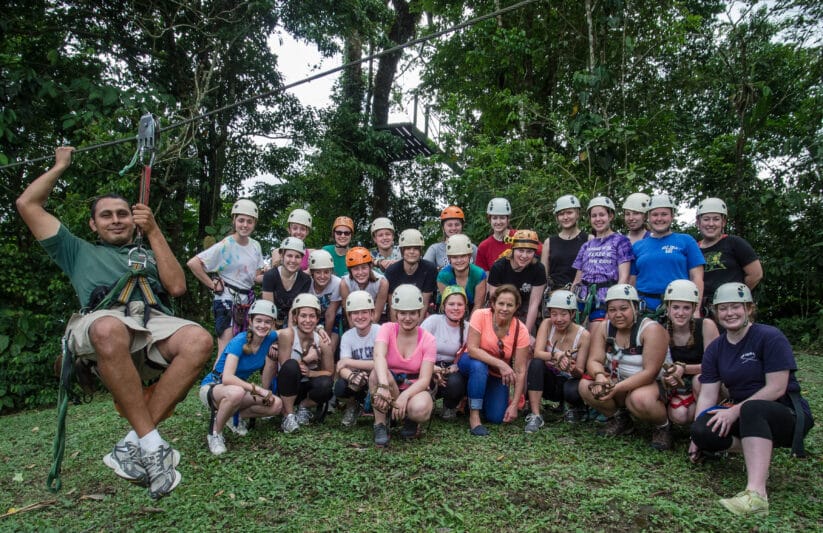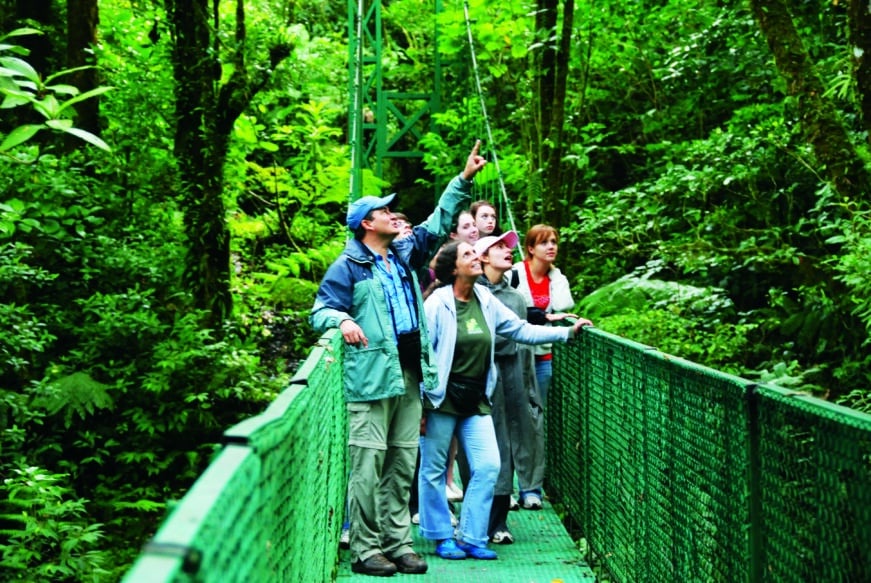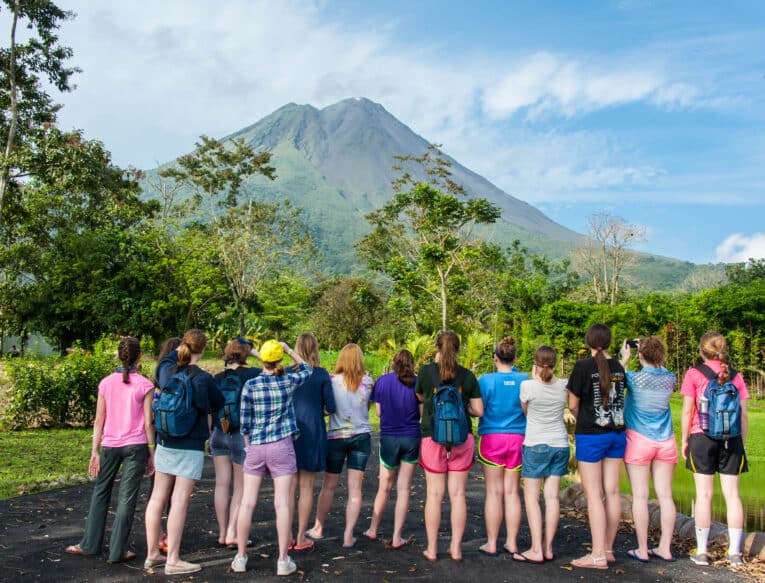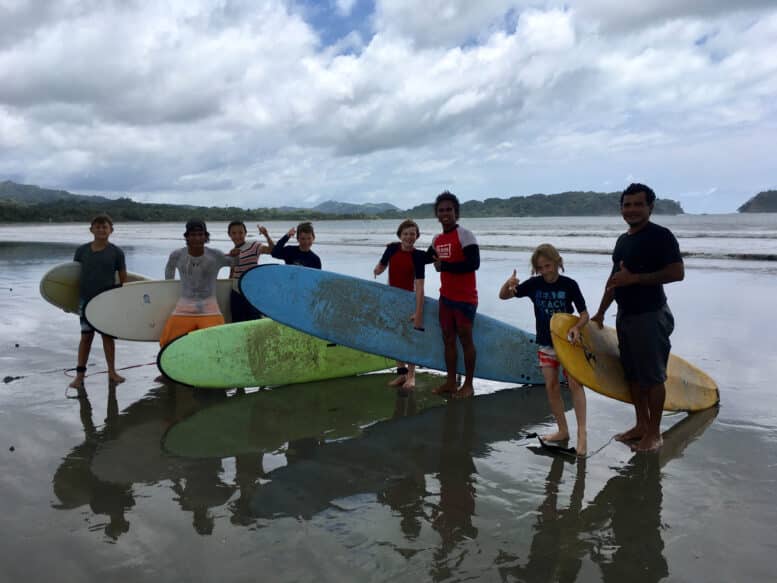8 Tips for Traveling to Costa Rica

Considering Costa Rica for your next international adventure? Our expert travel planning team has come up with some helpful tips for travel. Below, you’ll find eight different tips to guide you as you start the planning process, ranging from what to pack to what types of activities you can expect on your trip.
Browse ACIS Tours to Costa Rica
1. Plan Around the Costa Rican Seasons
One important thing to know about Costa Rica is that there are two main seasons, one of them being the dry season and the other being the rainy season. The dry season usually takes place in December all the way to April, and the rainy season falls from May to November.
Now, your initial instinct might be to avoid the rainy season (Because who wants that on vacation?) but there are some joys that you can only find during that time of year. For example, if seeing sea turtles hatching is at the very top of your list, you will only experience this event during the rainy season. Plus, costs are generally lower during the rainy season, which is great for cost-conscious travelers.

2. Know the Currency
The Costa Rican currency is known as the Colón. Named after Christopher Columbus, who in Spanish is called Cristóbal Colón, the ₡ symbol appears in front of any pricing. Don’t become confused, though: It is different from the American cent symbol!
We suggest that you are prepared for your initial arrival and have some Colónes on you before departing, so make sure you exchange some cash in the United States. If you forget to do this, there should be ATMs at the airport once you land.
A few fun facts about the Colón: You may hear the phrase teja being used. This means roof tile in Spanish and it is equivalent to 100 Colónes. Another fact is that the 1,000 Colónes note is called un rojo which means red in Spanish. Another thing you may not know is that the 5,000 Colónes note is called tucán (toucan), because it used to feature an image of a toucan. Now it has been replaced by a monkey.

3. Pack for Adventure
Costa Rica is all about outdoor adventures, so your packing list will be different than for a trip to the museums of Europe. As you are thinking about packing for your trip, make sure you don’t forget comfortable shoes, quick drying clothes, and most importantly a reusable water bottle. You want to be able to refill during high intensity activities and it’s a much more sustainable way to travel.
It is suggested that you pack at least two pairs of comfortable shoes because when one walks a lot in the same shoes, especially across varied terrain, it quickly becomes uncomfortable. Therefore, being able to alternate shoes will make the treks easier on you.

4. Prepare for Nature’s Playground
When in Costa Rica, there are a few must-see natural attractions. One is Arenal Volcano National Park. Known for the active volcano which gives the park its name, Arenal has plenty of hiking opportunities. As you walk, be on the lookout for wildlife such as tree frogs, jaguars and monkeys.The park is also known for its hot springs, so bring your bathing suit!
Another must-see natural attraction is Manuel Antonio National Park. This park is a beautiful combination of the rainforest, white sand beaches and even coral reefs. This national park is known for its wildlife diversity and tropical plants. You might even see three toothed sloths and the endangered white faced capuchin monkeys.

5. Savor Local Flavors
When talking about travel, we can’t forget about the food. Costa Rica has a few traditional dishes that you will want to be sure to try. One is Gallo Pinto, which has a rice and beans base, and is traditionally served at breakfast alongside eggs. It also includes peppers, onions, and spices (usually cilantro). Gallo Pinto is an important part of the cultures and identities of both Costa Rica and Nicaragua.
Another great local dish is casado, a typical lunch plate. This staple is made up of white rice, black or red beans, cooked vegetables, and a salad. Then you get your choice of chicken, beef, fish or eggs. This dish usually comes with a side of plantains. The term casado may have come from when customers at a restaurant asked to be treated as casados (married) since married men often had these meals at home.

6. Learn to Surf
With beautiful beaches and plenty of waves, Costa Rica is known as a surfer’s paradise and beloved for its big surfing culture. It is a very popular surfing spot due to it being located right next to the equator. If you want to learn how to surf, there are a few beaches that offer beginner friendly surfing lessons such as the Playa Tamarindo and the Playa Conchal beaches. On an ACIS Tour such as the Sámara Beach Language Study, a surfing lesson is included as part of your itinerary!

7. Mind the Volcanoes
Doesn’t going up close to a volcano sound cool? In Costa Rica, it’s possible! Some active volcanoes offer a once-in-a-lifetime view because they are surrounded by walking trails that are easily accessible. Arenal, for example, is one of the active volcanoes with walking trails. One of the most popular is called Las Coladas. This trail winds through a dense forest and brings you to a volcano viewpoint and a cooled lava field.
As great as it is to see a volcano up close, though, you should always remember to put safety first. If you decide to go to any active volcano locations, make sure to check the volcanic activity ahead of time and always be mindful of geothermal activity as you’re hiking.

8. Embrace the Pura Vida
One thing that the Costa Ricans live by is the phrase pura vida, or pure life. This is a lifestyle, a feeling, and a perspective that captures how Costa Ricans admire life’s simple features and how they find joy in the little things. Pura Vida encourages people to appreciate life and live in the moment with a positive mindset, so when you travel to Costa Rica, embrace the motto to the max!
As a leader in educational travel, ACIS differentiates itself through carefully planning centrally located hotels, dedicated program consultants, and unique experiences that help teachers meet their classroom goals. Choose ACIS for an international student trip to Costa Rica that focuses on quality, customization and the most inclusions possible.











Would like to move there soon
Was just there for eight days in rainy season.. it rained twice for two hours. The forests are very lush and wildlife sightings were abundant. We did not need any Costa Rican currency. But be aware… Not all credit cards give a fee free currency conversion…. And AMEX is accepted at about half of the businesses.
I went to Costa Rica this summer and it was such a wonderful experience, I would so do it again in the future! I love the culture: the traditional dances, their food, and their way of life. Extremely kind and humble people.
I went to Costa Rica in August of 2024 during the rainy season and it was beautiful. The rain was a treat to cool off the hotness. I would love to go back. The ppl that live there live a simple comfortable relaxing life